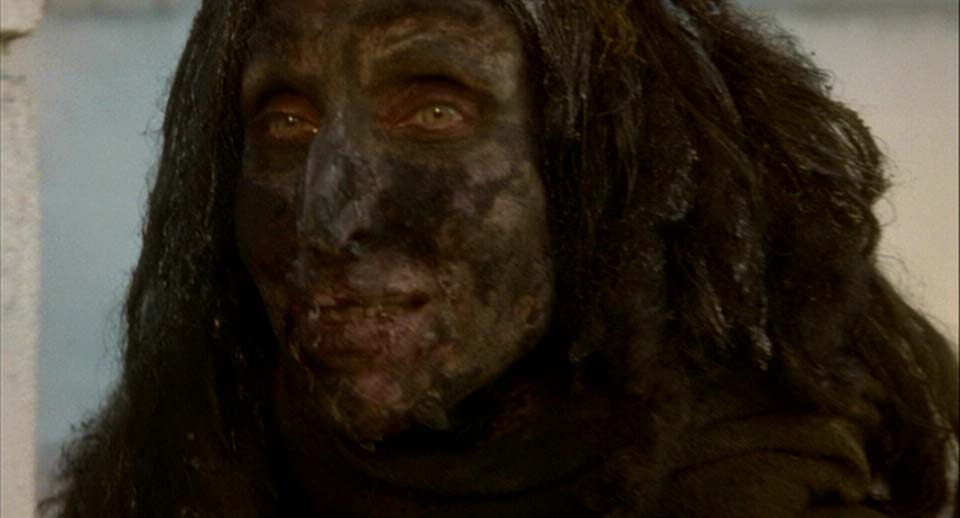
David Lynch is an artist whose work has inspired a niche handful of people and conversely perplexed a great many. Some complain that the symbolism is impenetrable and the surrealism is nothing but quirky, pretentious art-house affair and while his detractors make understandable points, Lynch’s work in many ways transcends the noise of mainstream audiences and taps into the pulse of a devoted crowd of fetishists and film savants.
His movies often transcend genre in ways that are unpredictable and bewildering; most of Lynch’s work explore themes of darkness and introspection as well as a curious underlying thread of hope for humanity.
From award-winning material to limited theatrical releases: from Duran Duran concerts to successful primetime television, Lynch has something to offer everyone, no matter how reluctant the viewer. However, his filmography is a tough nut to crack and watching just one of these movies can leave you mentally and spiritually exhausted when the credits roll!
These films can often be described as a sequence of isolated vignettes that make up a narrative whole and as an act of notable bravery Taste of Cinema is taking a look at the top ten powerfully weird and wonderful moments in Lynch’s body of work! So sit back, put your art-house-‘o-vision goggles on and drop on down the rabbit hole!
WARNING – Spoilers ahead
10. Glinda, the Good Witch from Wild at Heart
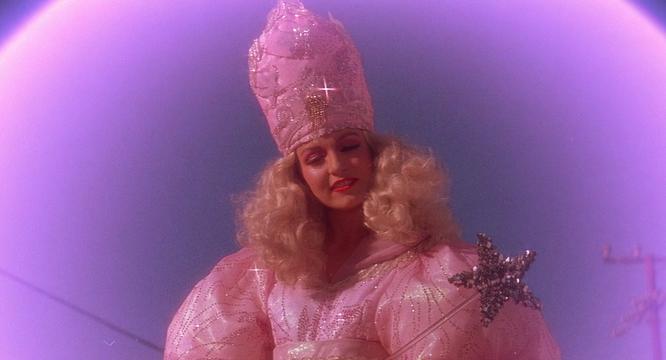
Wild at Heart is best described as Thelma and Louise meets Fargo: a quirky road movie about love and liberation wrapped in a shroud of gallows humour; mostly perpetuated by the notorious insanity of Nicolas Cage’s screen presence that can be just as bewildering as it is amusing.
The closing sequence shows one half of our leading duo Sailor (Cage) insulting and emasculating a gang of cartoonish street thugs with fragile egos. They proceed to knock him out and in his state of unconsciousness Sailor meets with an apparition of Glinda, the Good Witch (Sheryl Lee), who tells him not to “turn away from love, Sailor.”
After meeting with the goddess, Sailor awakens and apologises to the gang for his homophobic slurs, bids them farewell and proceeds to chase down the love of his life Lula (Laura Dern) across the tops of vehicles stuck in traffic. This is just one of the many moments in Wild at Heart that’ll either make you laugh or scratch your head: an hilariously appropriate denouement to a rollercoaster of an experience.
9. Opening/Severed Ear from Blue Velvet
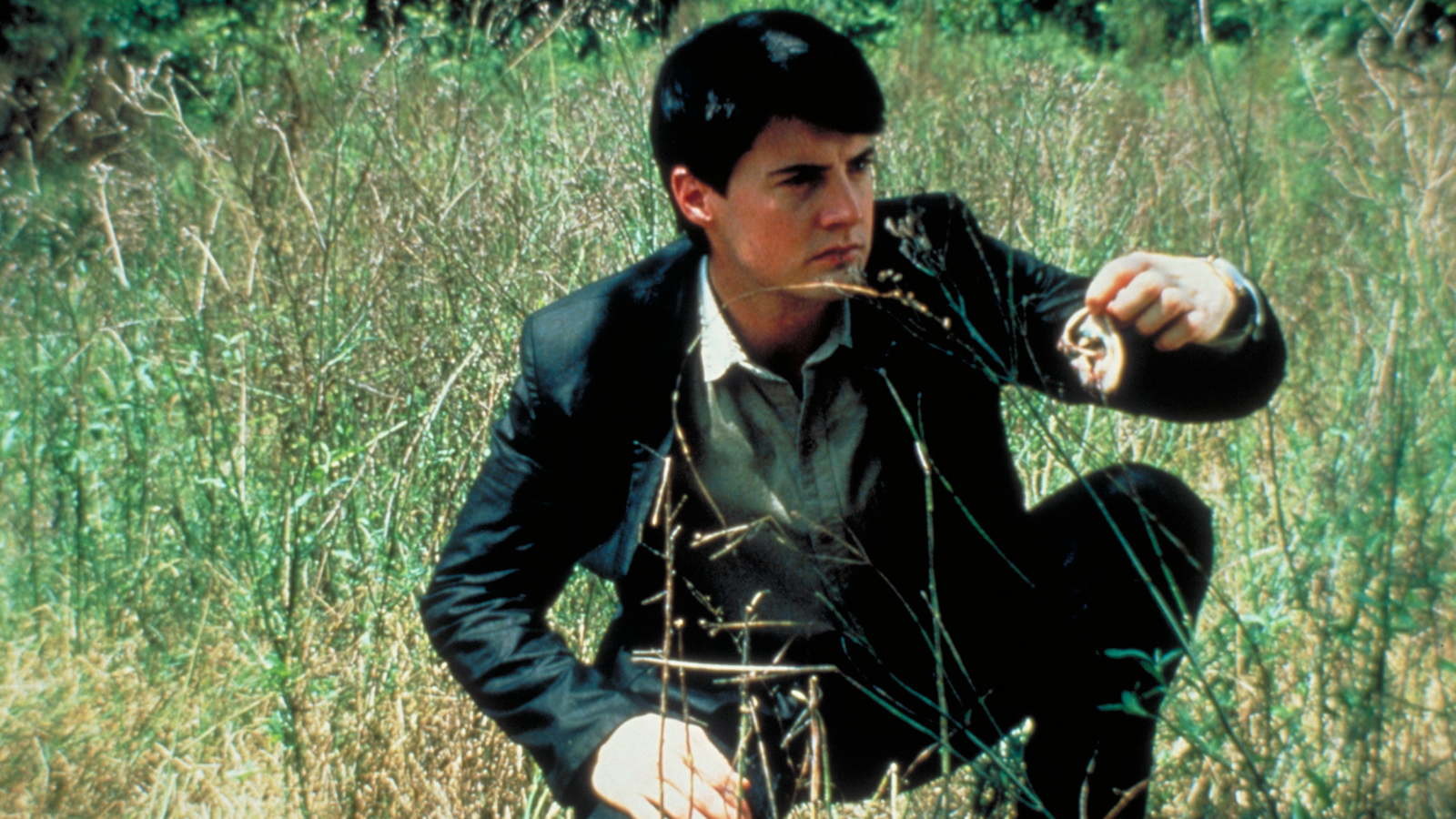
Blue Velvet is perhaps one of Lynch’s most accessible movies: a fairly straight-forward, ‘Hitchcockian’ mystery thriller revolving around the naive and voyeuristic exploits of Jeffrey Beaumont (Kyle MacLachlan) as he’s dragged into a seedy underworld of sadistic, sexual ultra violence and moral depravity.
Lynch has revealed in interviews that Blue Velvet contains autobiographical elements and describes Jeffrey as something of a conduit through which he could explore elements of his youth as an American living in a nineteen fifties lumber town.
These nostalgic concepts are used primarily as window-dressing throughout the film, and its depiction of a suburban wonderland inhabited by a disease of decadence and peril if one simply scratches beneath the surface is both haunting and resonant.
The film is also noteworthy for its compelling and unsettling performances, particularly from Dennis Hopper as the sadistic, abusive Frank Booth and the airy, provocative femme fatale pastiche Dorothy Vallens (Isabella Rossellini): both portraying a disarmingly graphic chemistry fractured by pure malevolence and lust.
Blue Velvet opens with a classy sequence of title credits against a blue velvet backdrop and a haunting Angelo Badalamenti score that bleeds into Bobby Vinton’s “Blue Velvet” (Charlie Kaufman, eat your heart out). The titles cross-dissolve into a sapphire blue sky with a highly contrasted white picket fence and red rose in the foreground.
The sequence elegantly tip-toes through shots of wide-grinning suburbanites, fourth-wall breaking firefighters who wave at the camera – almost inviting the audience into this Pleasantville dream world – and a whole host of images symbolic of nuclear family austerity (immaculate lawns, saturated colours, school children crossing the street etc.).
This borderline nineteen fifties propaganda piece is quickly interrupted by a shot of an old man watering his lawn and collapsing from a stroke. The graceful score is soon drowned out by a low, ominous hum as the camera plunges into the dirt, uncovering a swarm of insects scurrying furiously amongst the soil.
This sequence is the first example of impending danger that the audience is exposed to, as the insects serve as enduring imagery for the darkness that lives beneath the ground. Another sequence, in which the camera slowly zooms into the canal of the severed, decomposed ear that Jeffrey finds, foreshadows the dangers and trouble that awaits him, from which there is no return.
Lynch is very much a visual artist and sometimes it takes a striking image such as this to really set the tone for a movie, especially one so viscerally dark and compelling.
8. Audition from Mulholland Drive
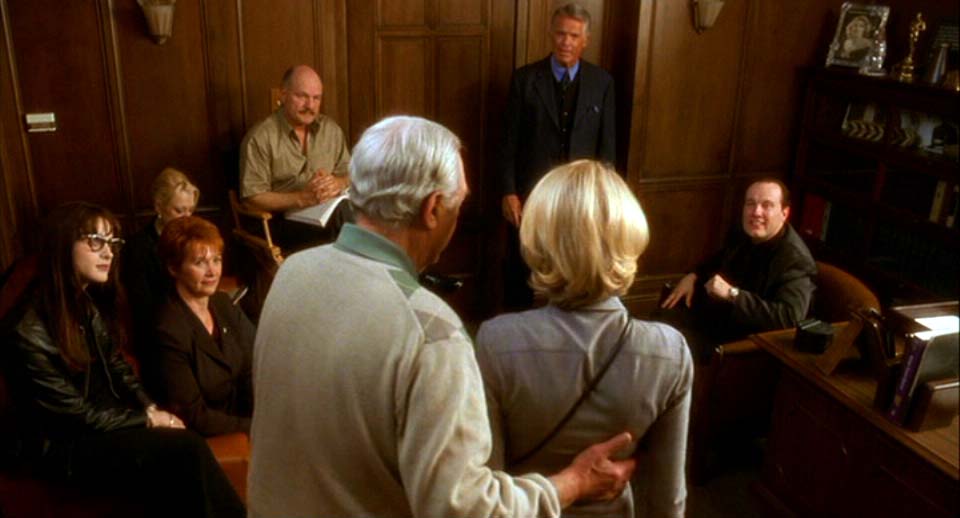
Much like Inland Empire, Mulholland Drive explores the darker side of Hollywood and the facade of show business. Regarding the technical aspects of this scene, there isn’t much of a case to be made for its strangeness, but in the context of the narrative the audition scene is powerfully deceptive and tonally unhinged.
Prior to this scene the audience witnesses Betty Elms (Naomi Watts) and Rita (Laura Elena Harring) performing a simple read over of the lines in Betty’s audition script.
They playfully mock the quality of the writing by delivering the lines as if they were starring in a melodramatic soap opera, however: in the audition, she unleashes an emotionally nuanced, provocative performance that entrances both the casting agents and the audience.
Up until this moment, Lynch presents the viewers with archetypal characters that deliver stilted dialogue and a world drenched in soft lighting, only to perform a complete one-eighty by forcing them to digest raw emotion and witness a previously underdeveloped protagonist breach the threshold of her insecurities as a performer.
7. Prison Scene from Lost Highway
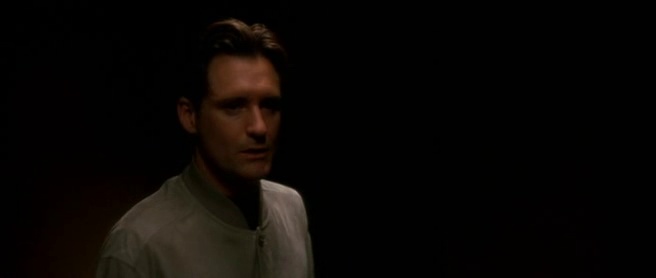
On paper, this French-American neo-noir thriller that follows Bill Pullman as a convicted murderer as he unceremoniously morphs into a young mechanic and leads a brand new life sounds inexplicable and bizarre; on screen, however, Lost Highway is both of those things ten-fold.
This nightmarish psychological roller-coaster is notable for its inclusion of an ensemble cast of famous iconoclasts, such as ex-Black Flag vocalist and spoken-word artist Henry Rollins; the irreverent and hilarious late, great Richard Pryor; Scott Ian of the thrash metal band Anthrax; and Marilyn Manson making his debut appearance as a porn actor.
We’d be remiss not to also mention the soundtrack comprising mostly of German industrial-metal band Rammstein (much to the bewilderment of Lynch’s peers during the production of this movie).
Lynch is renowned for exploring themes of duality and identity and Lost Highway is perhaps the strongest and most underrated example of such.
The sequence in question shows Fred Madison (Bill Pullman) as he is guided through a cell block to death row by two prison guards, one of which is portrayed by the walking punk-rock artillery that is Henry Rollins. Whilst sequestered in his concrete tomb, Fred Madison is plagued by headaches that are only exacerbated by the negligence of his captors.
During a particularly cerebral moment, a chorus of haunting voices beckon the veil of reality to be lifted, at which point Fred is bombarded by visions of a burning shack repairing itself – from which a mysterious figure emerges – and a young man, whom Fred appears to morph into in a series of flashing lights and gore: jettisoning the remaining run-time of the movie into a narrative tail-spin of confusion and intrigue.
6. Red Room from Twin Peaks: Fire Walk With Me
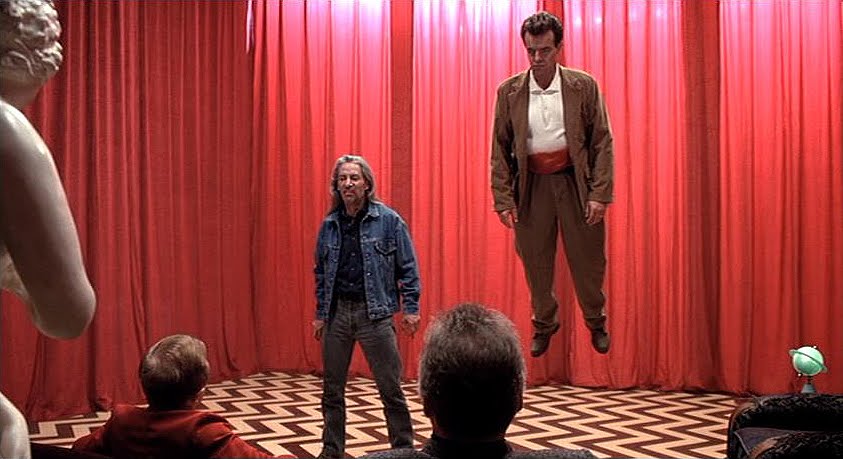
Twin Peaks is possibly Lynch’s most revered and beloved creation, with a devoted following of feverish artists and hipsters worldwide who obsess over and dissect the show and vainly attempt to assimilate all of their friends into the cult of this enviably original and inimitable franchise.
While the TV show was known for its depiction of a soap-opera inspired, white-picketed, Middle-American utopia drenched in macabre, surrealistic undertones, the movie – Fire Walk With Me – was divisive amongst fans and panned by critics for what some perceive as a hodgepodge of sexual violence and a script riddled by ostensible non sequiturs and narrative missteps.
As if the impenetrable auteur that is Lynch isn’t an alienating pitch already, Fire Walk With Me definitely doesn’t do itself any favours by serving as simultaneously a prequel and sequel to the show. The assumption is that this movie was created for the passionate and dedicated fans alone to form their own takeaways about the fates of the bizarre and beloved characters.
Fire Walk With Me ends with a sequence in which Laura Palmer’s (Sheryl Lee) spirit is sitting in the Black Lodge (Red Room) with Special Agent Dale Cooper (Kyle MacLachlan) after a disturbing murder scene. Dale Cooper places a hand on her shoulder and an angel appears. The camera stays fixed on a close-up of Laura’s face as she is engulfed in incandescent light; laughing and crying.
This scene isn’t particularly strange on its own and is tonally uplifting and light-hearted, but there are so many unanswered questions that remain as the credits roll. The audience is now aware of Laura’s fate prior to the main events of the show, but the mystery of the town still permeates and how these events intertwine with Dale Cooper’s origins is something that begs explanation.
Thankfully, the show has been renewed for next year, so either there’ll be a straight answer or a further three decades of perplexity!